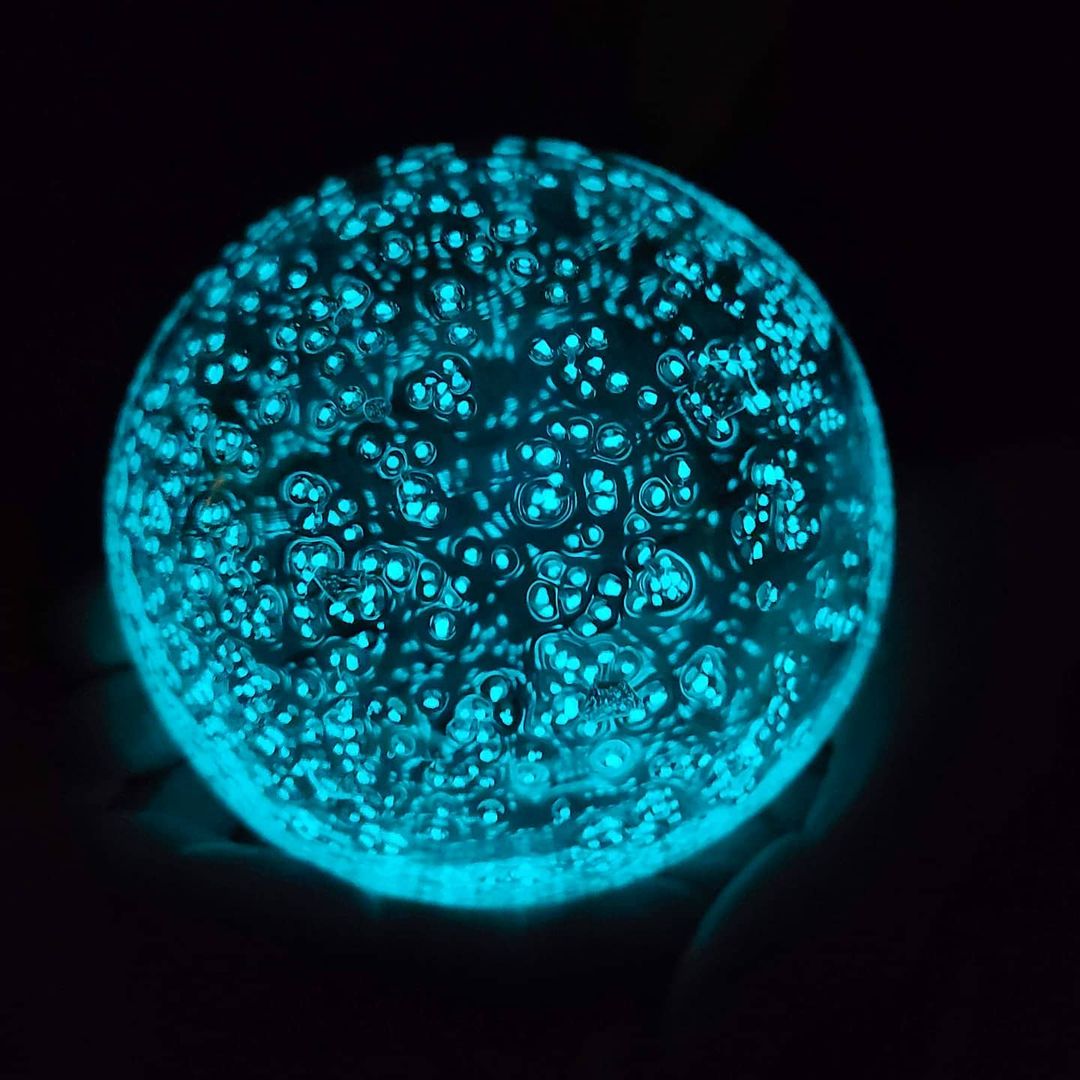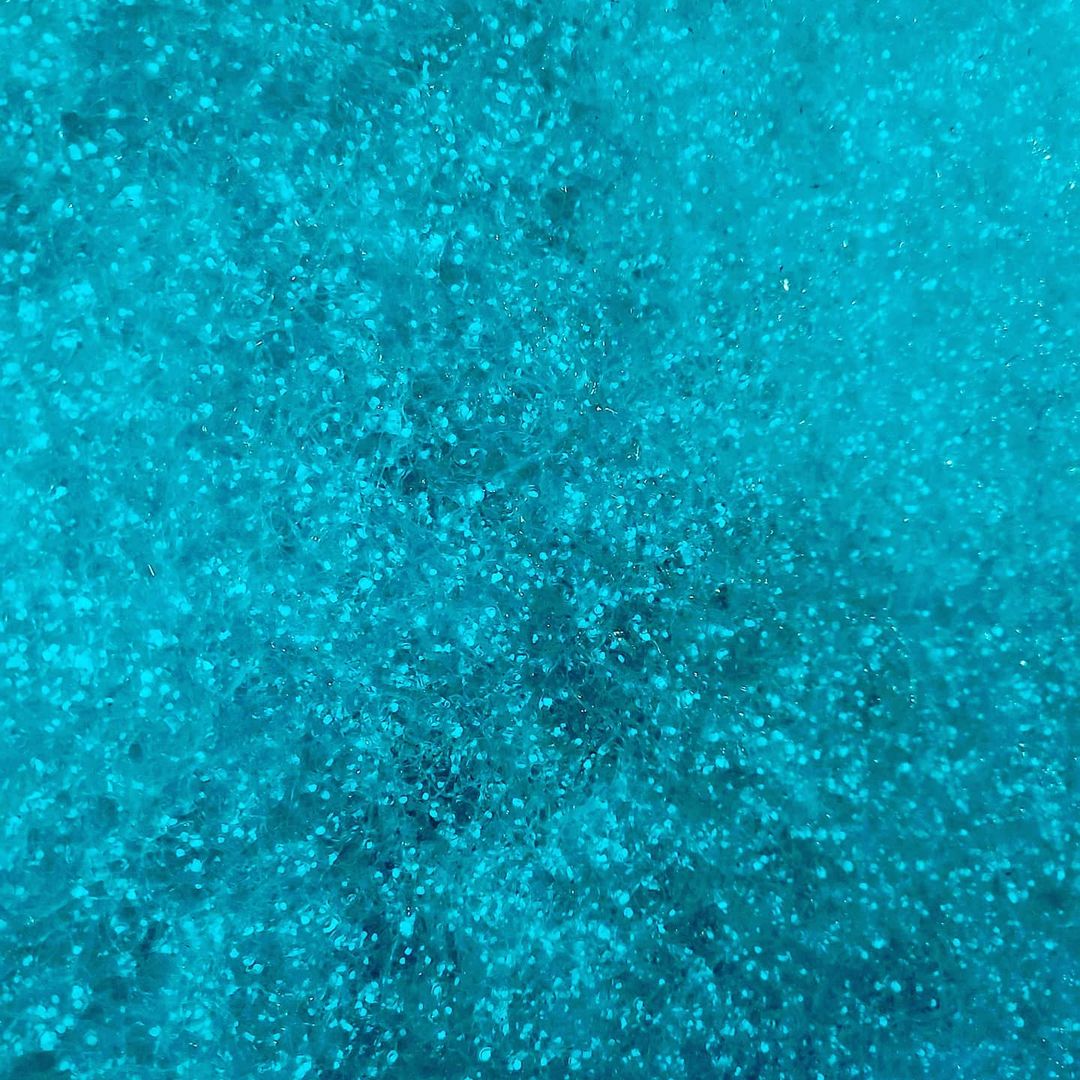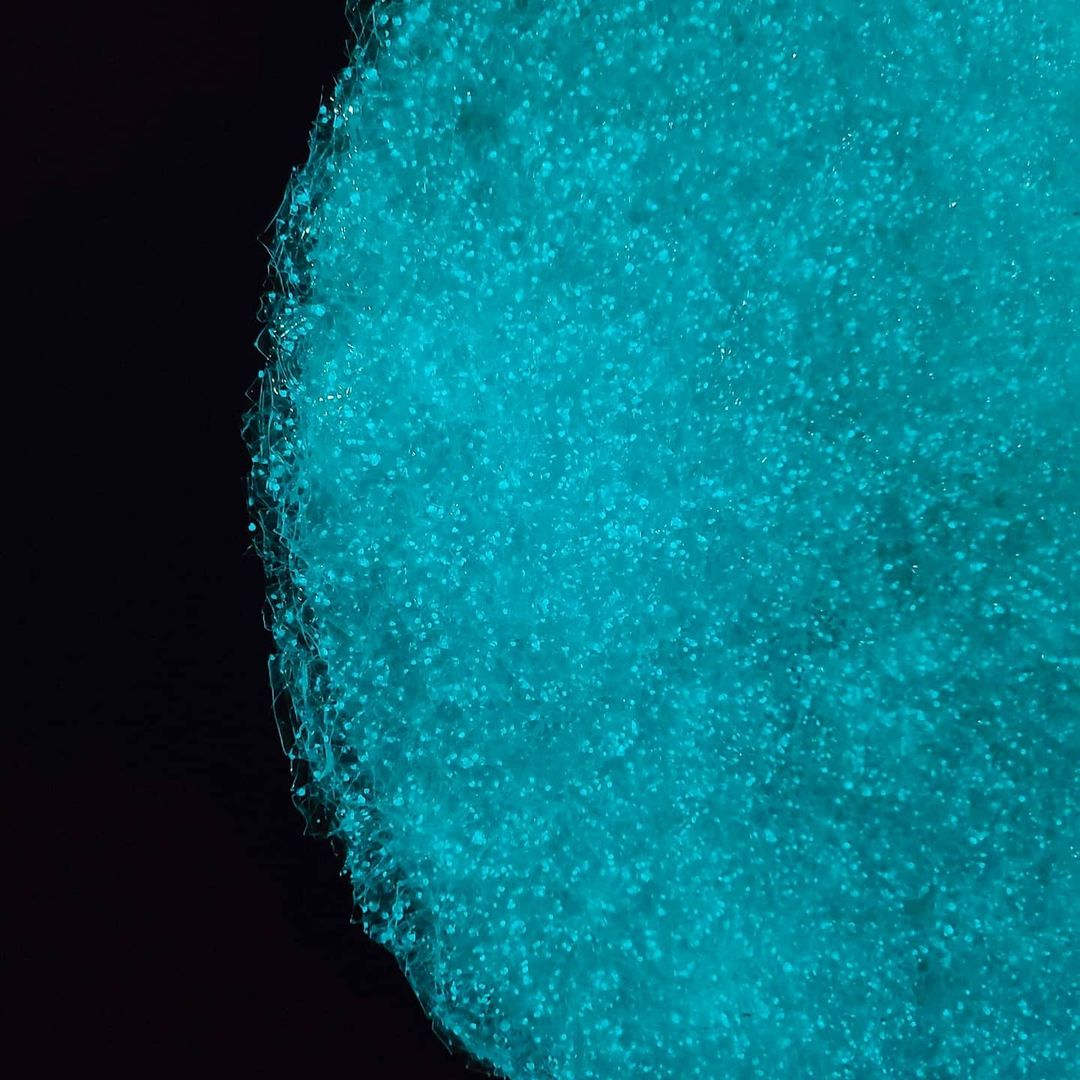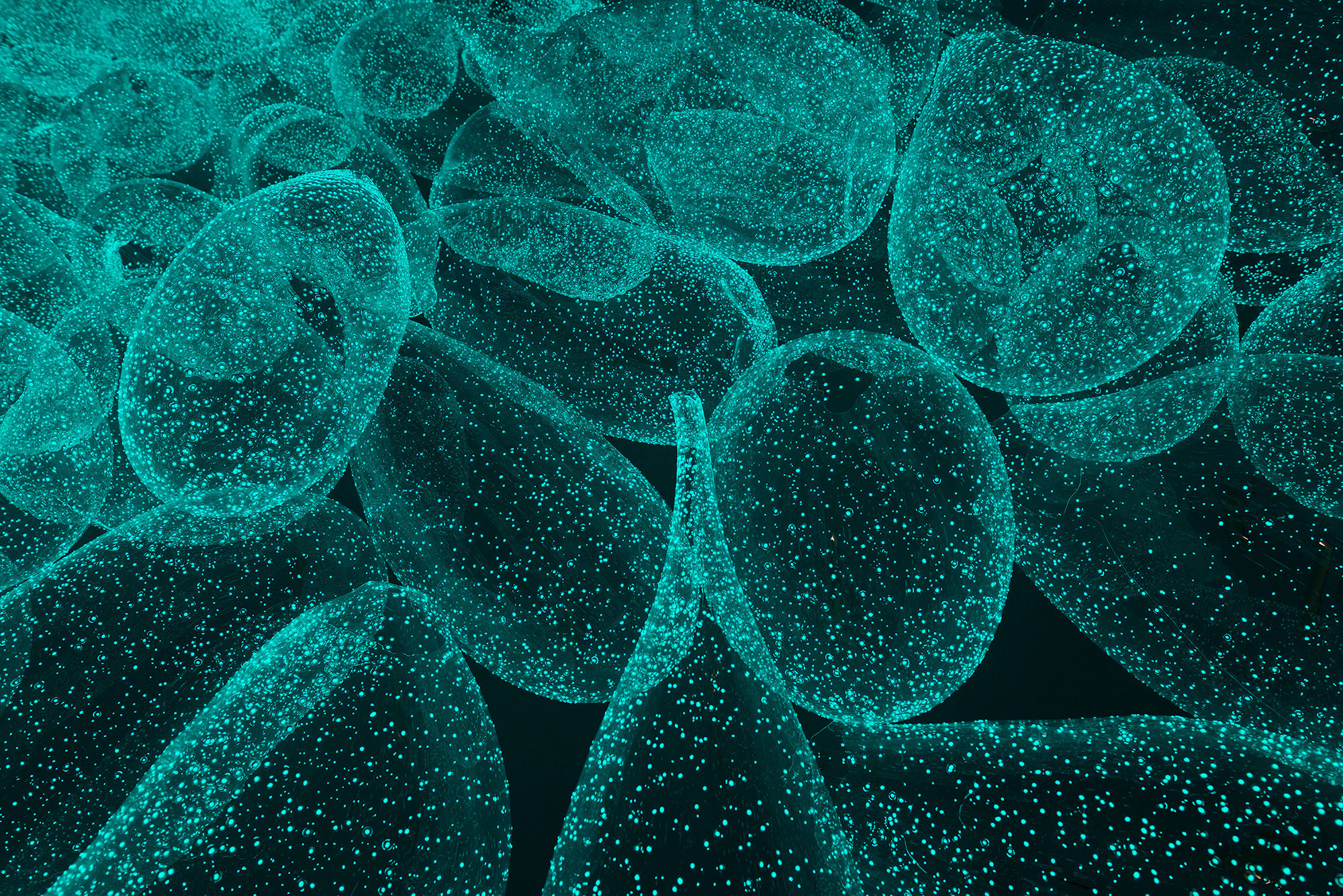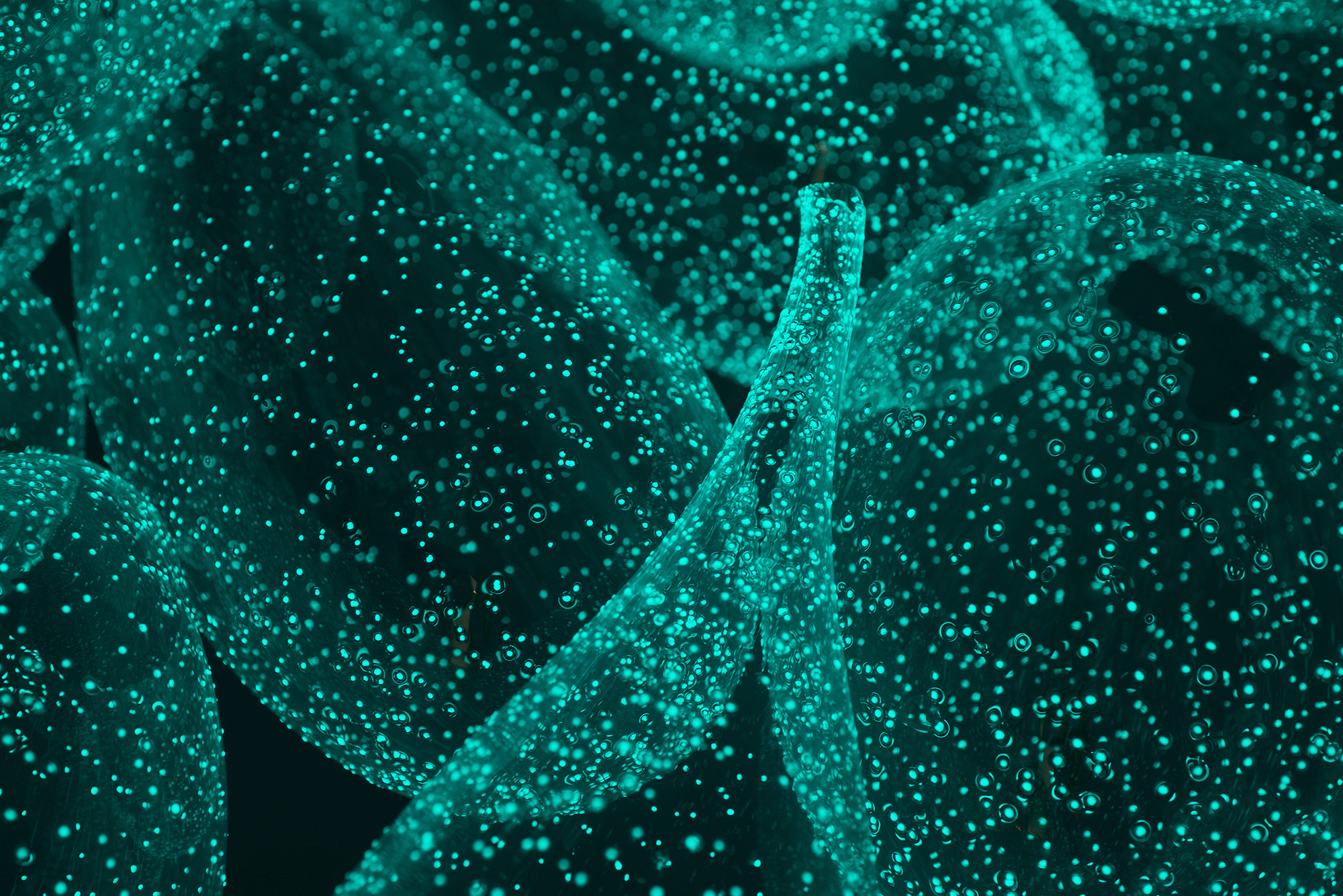
The Luminous Sculptures
Although glass sculptures seem to be a straightforward medium for most artists, you won’t find Rui Sasaki traveling down the traditional road.
This Japanese artist’s body of work contains several experiential opportunities that create changes and perspective shifts based on how a viewer observes the result. The delicate glass becomes an unpredictable opportunity to see different patterns, light refractions, and glowing hues.
Sasaki says that the best way to observe these pieces is to think about the weather. The speckled sculptures can visualize sunshine, record the temperature, and transfer that information to you so that you know what to expect for the day.

“Liquid Sunshine/ I am a Pluviophile,” glass, phosphorescent material, broad spectrum UV lights 2019. (Photo credit: Yayushi Ichikawa)

Liquid Sunshine/ I am a Pluviophile 
Liquid Sunshine/ I am a Pluviophile
Sasaki Uses Phosphorescent Glass to Achieve Results

Glowing in the Dark Glass
The glowing crystals contained with Sasaki’s glass sculptures tend to have green tinges to them at their brightest levels before they fade off into the blue color spectrum.
It’s not unusual for viewers to feel like they can’t see everything in the glasswork at first because the display area or hall is kept dark. It is only when their eyes start adjusting to the lower light levels that the experience becomes an other-worldly environment in art.
Since each encounter creates a different reaction within the embedded lights, the same person can have two unique experiences when viewing these pieces.
Sasaki says that this opportunity reflects the unique reactions to the phosphorescent crystals in the glass sculpture. Since those components store light wavelengths that are close to what you’d experience in sunlight, it is story past light exposures that eventually accumulated within the material.
If viewers remain in the gallery for an extended time, they can see the work start to glow weakly in the darkness.
As you stay near the work for even longer, the crystals eventually lose their shine. The glow fades until it disappears, plunging the gallery into complete darkness.
Sasaki says that this process could take a minute, an hour, or a day to develop. It all depends on viewer movements.
More About Rui Sasaki

“Weather Chandelier” (2015), glass, phosphorescent crystal mixture. Photo by Kichiro Okamura
Rui Sasaki is an educator and artist who prefers using transparent materials for her work. She graduated from the Rhode Island School of Design in 2010 with an MFA after completing a BA at the Musashino Art University.
Sasaki has taught contemporary art and glass design at several institutions, including Pilchuck Glass School, the Kyoto University of Art, and Worcester State University. She has been a working member of the Toyama City Institute of Glass Art since March 2016.
You can find Sasaki’s artwork as part of the permanent collections of several museums worldwide, including the Corning Museum of Glass, the Glasmusset Ebeltoft in Denmark, and the Ernsting Stiftung Glass Museum in Germany.
She is currently working as faculty and a specialist at Kanazawa Utatsuyama Kogei Kobo.
“I want to bring attention to the moment when I discover who I am in this world of empty and dead space,” Sasaki says on her website. “In my work, the uncanny becomes an important tool to help me recall my authentic memories from hidden and forgotten ones.”
The Sculptures Incorporate Organic Elements
When viewers see Sasaki’s sculptures, the first impression is that of an organic reproduction. Some pieces are more abstract, making it feel like you’re viewing stalactites or stalagmites in a cave cavern that you just stumbled into one day.
For other pieces, it feels like you’ve walked into a scene from your daily routine. One of her most famous displays in this collection involves phosphorescent tableware that sits on a reflective surface.
Some sculptures look like swollen raindrops. Others appear to be sun-like orbs that are waiting to deliver comfort and warmth.
She’s even created a suspended chandelier using this experimental technique, reflecting Sasaki’s feelings that she had lost her sense of what “home” meant after moving to the United States for a few years.
Now that she is working in Kanazawa again, Sasaki says that you can feel a sense of reverse culture shock when exploring her work. That’s because her efforts are trying to rediscover the intimacy that she has with Japan each day.
You can see the artist’s sculptures on display in multiple group shows throughout Japan each year. Sasaki has been featured at the Art Museum Riga Bourse, the Toyama Prefectural Museum of Art and Design, and Gallery DiEGO Omotesando in Tokyo. She’s also had an exhibition at the Tainan Art Museum in Taiwan.
If you want to stay connected with Rui Sasaki, you can also follow her Instagram account.
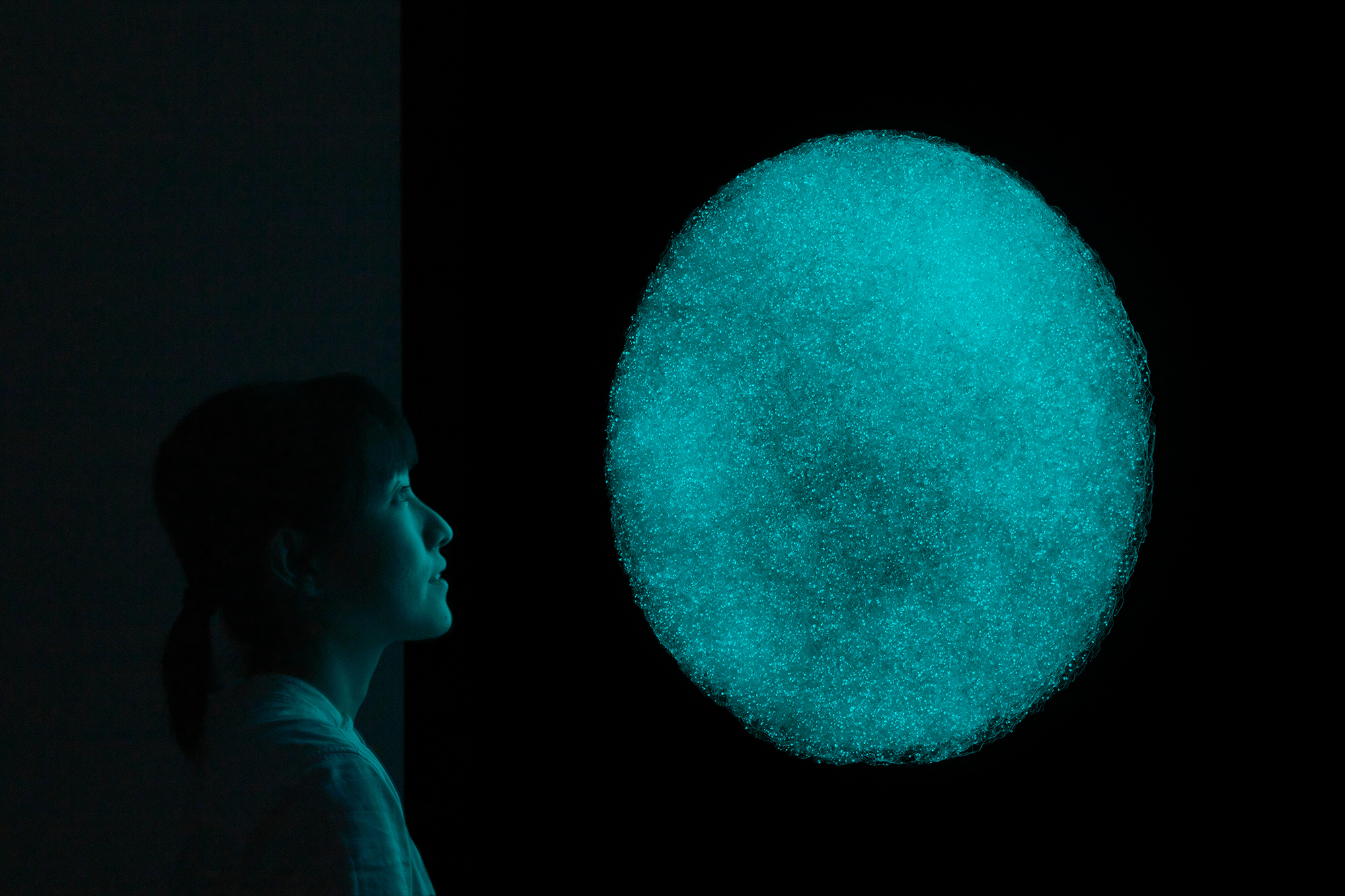
“Weather Mirror” (2021), glass, phosphorescent crystal mixture, mirror, foot switch. Photo by Kichiro Okamura
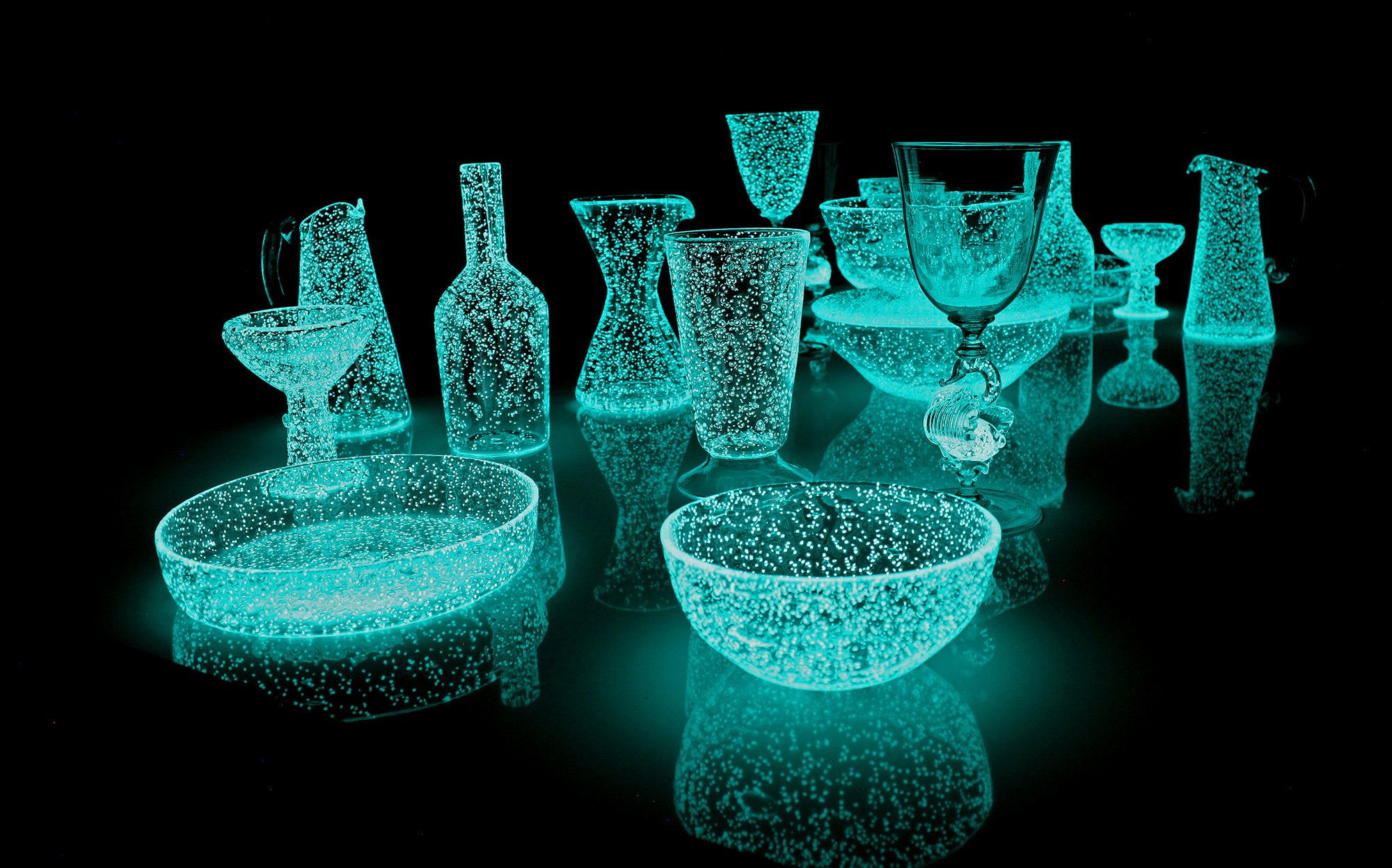
“Remembering the weather” (2020), glass, phosphorescent crystal mixture, lights, motion sensor, plywood, 1,800 x 590 x 300 millimeters. Photo by Kichiro Okamura

“Remembering the weather”

Liquid Sunshine
- 12shares
- Love This
- Facebook Messenger


